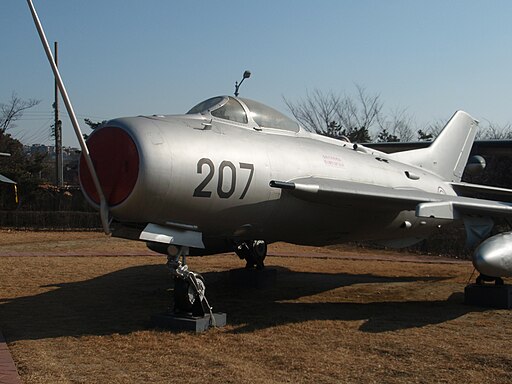Choe Su-ryong, a former agent of South Korea’s National Intelligence Service (NIS), has revealed that North Korea has embarked on a significant military modernization effort, repurposing outdated fighter jets into suicide drones armed with precision-guided munitions. These unmanned suicide drones are intended to strike major industrial and infrastructure facilities in South Korea, according to Choe’s statements to The Korea Times.
元諜報員, CC BY-SA 3.0, via Wikimedia Commons
North Korea’s focus has turned to the Soviet MiG series of fighter aircraft, ranging from MiG-17 fighter jets dating back to the 1950s to more modern MiG-29s introduced in the 1980s. With a substantial stockpile exceeding 400 MiG fighter aircraft, North Korea possesses a formidable arsenal for this transformative endeavor.
Defense analysts like retired Air Force Col. Hong Sung-pyo and defense analyst Shin In-kyun emphasize the potential significance of North Korea’s actions. “The North Korean military authorities would be tempted to repurpose the outdated fighter jets, such as MiG-17 and MiG-19, to use them as unmanned suicide attack drones,” Hong told The Korea Times. “Actually, the South Korean military has been preparing for this kind of military threat for a long time.” Shin was quoted as saying that many of North Korea’s fighters are so obsolete that they don’t function as intended and therefore don’t deserve to be called fighter jets anymore.
Considering the growing threat landscape, North Korea’s drone development carries implications for South Korea’s security, drawing parallels to the extensive use of drones in the Ukrainian conflict. Choe’s statement that these suicide drones will target major industrial and infrastructure facilities underscores the seriousness of this threat.
The strengths of suicide drones as weapons are numerous, including their anonymity, convenience, and precision. This combination of factors enhances their attractiveness for military applications. To address this evolving threat, South Korean President Yoon Suk Yeol has urged a bolstering of South Korea’s readiness against potential North Korean drone attacks. Col. Hong, on the other hand, has expressed concerns about the broader implications of drone proliferation, citing the potential for civilian harm during peacetime and referencing examples of drones being weaponized by armed groups and terrorists in other regions.
In conclusion, North Korea’s endeavor to transform fighter jets into suicide drones introduces a new dimension of concern for regional security. The potential impact on South Korea’s infrastructure and civilian population highlights the urgency of preparedness measures. As the landscape of warfare evolves, the international community’s vigilance and adaptation are crucial to mitigating the risks posed by such innovative military strategies.
For more information, hit the Source below
